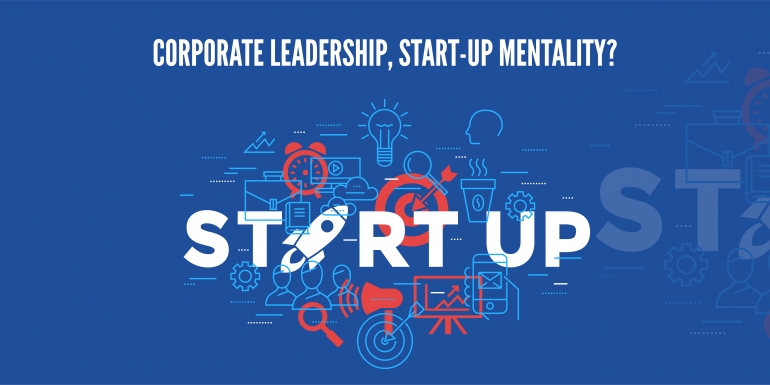In the past 5 to 10 years, the leadership development industry has been dominated by terms like VUCA. If you’re not familiar with this term, it suggests that we’re now (or have been) living in a Volatile, Uncertain, Complex and Ambiguous world, and that successful leaders need to be able to adapt to the new environment we find ourselves in.
So, what about the next 10 years? Actually, with the speed of transformation, 10 years is too long to start planning for, so let’s address the next 3 to 5 years.
More recent Leadership industry terms have included Authentic, Servant, Situational or Charismatic but I don’t fully buy into these. Yes, leaders need to demonstrate these qualities, but effective leaders know how to adapt their style to the situation and not be as one-dimensional as some of these styles suggest.
In fact, after working with more than 150 firms over the past 5 years, I see a different set of skills required by our leaders if their firms are going to continue growing and capturing market share.
The pressures being placed on corporate leadership are akin to those traditionally faced by startup founders: innovating at pace, flatter organisational structures, increased demand for flexible working, and even more of a ‘startup culture’.
This is a drastic change to 10 years ago, when those very same leaders would go about their work in a slower, more methodological pace following traditional hierarchies. There wasn’t anything particularly wrong about it at the time – as everyone was doing it – however the problem now is your competitors are starting to up their game. They’re launching products faster, meeting the needs of the younger workforce, and not abusing the power that comes with a leadership position.
Let’s look at 3 of these startup traits in more detail, and how corporate leaders can adapt them to suit their environment:
#1: Innovating at Pace
In a startup the mantra is more ‘innovate or die’ rather than the more sluggish ‘let’s form a committee to talk about forming an innovation team’. The startup has already released their next product by the time someone has made a decision in a large organisation. Leaders need to act quicker and not always wait for perfect information or the ‘ideal time’. The idiom ‘you snooze, you lose!’ has never been more relevant. The key here is to let go of prior frameworks and misconceptions about how things should be done and try something different. You’ll rarely get ahead without taking some form of calculated risk or being the first mover. ‘Fortune favours the brave’ as another idiom goes.
#2: Flatten Organisation Structures
I’ll start by starting I’m not a fan of zero hierarchy, such as Holacracy, which advocates self-directed teams and doing away with traditional management structures. However, there is a strong argument for reducing the number of layers someone has to go through to get a decision made or access top-level management. Many firms are still using structures from the industrial times, when they made sense. In today’s world, this is an archaic way of working that will ultimately hold you back.
Leaders need to empower their teams and not stand in the way of progress by running every decision up the chain, and then wait for the answer to come back down again. Spotify are famous for using squads where teams are comprised of the respective specialists, and the product manager has the power to initiate and deploy releases without senior management approval. This allows them to move with speed without being hampered by hierarchy and politics. As a corporate leader, what would need to happen for you to further empower your teams?
#3: Flexible and Redefined Job Roles
In startups, especially during their growth phases, employees often have to take on multiple roles and pitch in where needed. This can result in them working on several projects across different functions, in addition to their core day-to-day role, which has its pros and cons.
On the positive side, it provides new and interesting projects to work on and increases their knowledge across the firm. On the downside, it can leave you feeling like you’re being pulled in different directions, with different priorities, from different bosses. However, on a broader note, it allows the firm to move faster when required by leveraging on its best resources as and when is needed. There’s no waiting for one project to finish before you can put the ideal team in place. In a large organisation that can take anything up to a year for all the pieces to fall into place. By having a flexible workforce, leaders can create a more flexible firm that’s able to adapt to market conditions and get the jump on their competitors.
That flexibility doesn’t just stop with job roles, but also working conditions. Approximately two-thirds of firms in the UK and Singapore now have some form of flexible working arrangements in place, and it’s no longer just the smaller firms doing this. Many of the leading listed companies are leading the charge and have implemented policies in response to the demands of their workforce.
Flexible working has become a key item in contract negotiations and can range from flexible start/end times to unlimited vacation days. Multiple research papers show it leads to an increase in productivity and engagement, however it still has some way to go, with many workers highlighting they still feel left out of key discussions and regarded lower than their office-dwelling peers.
It’s clear that if corporate leaders are going to adopt some or all of the above strategies something needs to change, starting with them. It takes a new skillset to manage a remote or flexible workforce, but technology is there to help you. It takes a change in mindset to drive innovation at all levels and move faster without having all the information you might have previously had, but there are numerous case studies and online resources there to help you.
Can startups still learn some critical skills from corporate leaders? Of course, it goes both ways and perhaps fewer startups would fold with more corporate discipline, however with innovation and technology driving the majority of new business, corporate leadership is the one I would tackle first.
For more information on Mark visit his website www.keynote-speaker-singapore.com or visit his blog.



